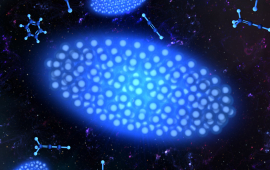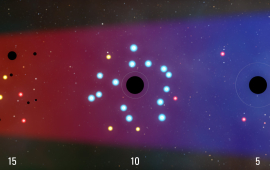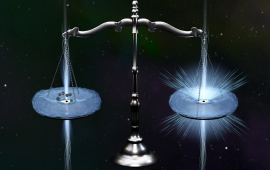JILA astrophysicists investigate a broad range of topics including the evolution of stars, the formation of planets, the dynamics of black holes, and even the fundamental properties that give rise to the Universe itself.
JILA’s astrophysics research is aided by data gathered by ground- and space-based instruments. Our researchers use this astronomical data to test and refine theoretical simulations of processes that occur in our solar system and throughout the Universe.











